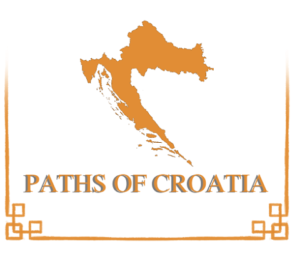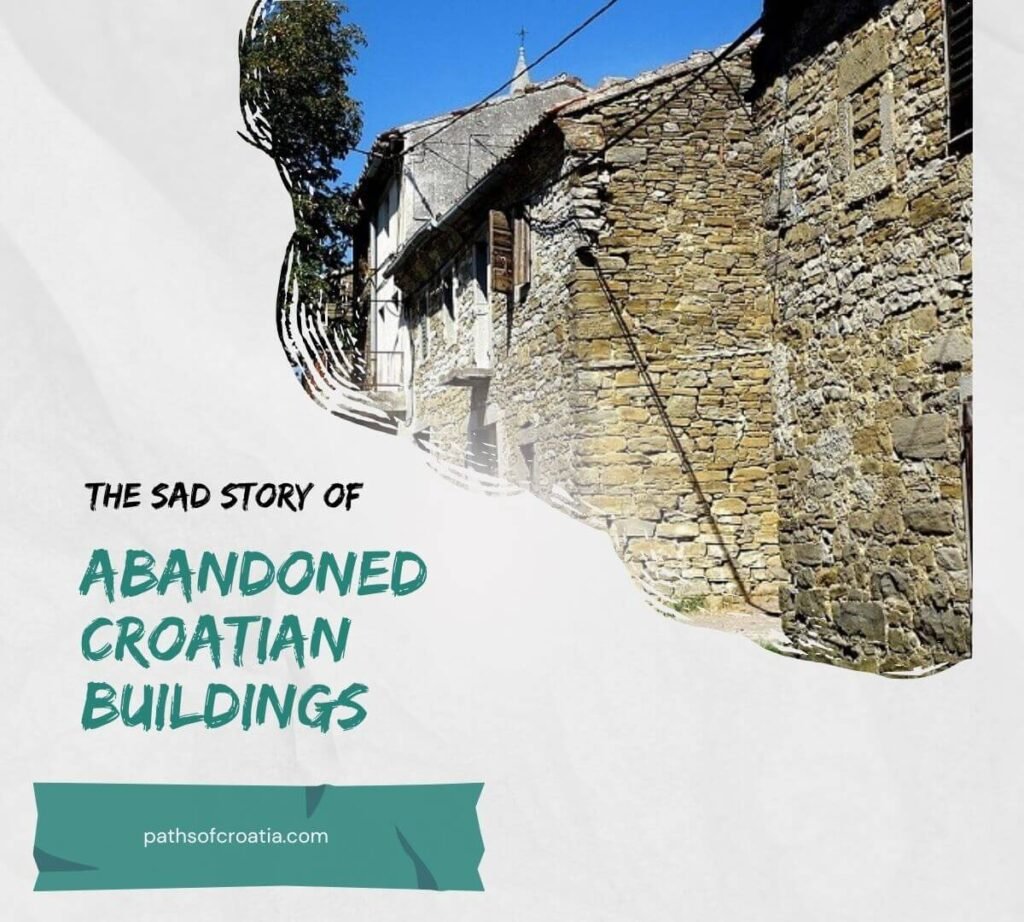
There are many abandoned buildings in Croatia, predominantly near the coastline or in rural areas including Istria, islands, and continental Croatia.
Various trends impacted the abandonment of buildings in Croatia that once full of life, now diminish daily and await an unknown future.
So, why are there so many abandoned buildings in Croatia?
Abandoned buildings in Croatia are often a result of economic challenges and transition periods in the past, but the complicated bureaucracy and the law contribute to the abandonment of the buildings. Most big abandoned buildings were built in Yugoslavia and collapsed after the Croatian War of Independence.
Moreover, the situation of medieval-aged abandoned villages of Istria and islands is universal anywhere in Europe, old people die, young move to modern cities, and eventually the villages become ruins.
Abandoned buildings from Yugoslavia
Croatia is also full of abandoned buildings that were built in Yugoslavia but were abandoned due to the lack of funds, or a swift change in perspective once the major investors backed off and the new political parties came to power.
The Croatian War of Independence in 1991 played a significant role in the abandonment of many planned projects usually found down the attractive Croatian coastline.
I’ll show you a few of the biggest ones, but you can expect to find many more if you desire to go on a hunt for abandoned buildings in Croatia.
Haludovo
Haludovo, nestled on the picturesque island of Krk in Malinska, is a testament to Yugoslavia’s former grandeur in tourism. Despite its decades-long decline, it remains a symbol of opulence and intrigue from the heyday of Yugoslav tourism. Once a pinnacle of luxury, Haludovo now lies in ruins, a victim of neglect and privatization.
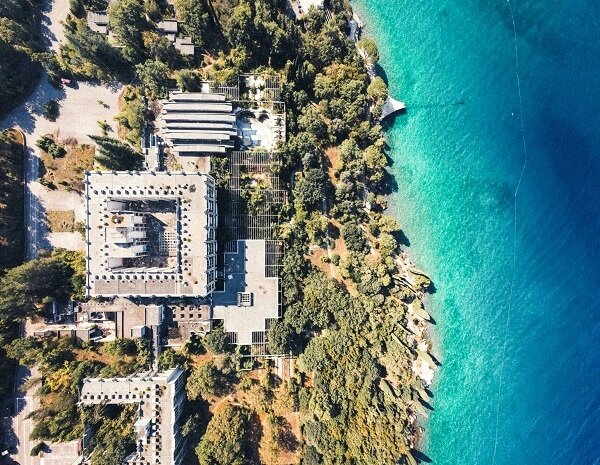
The Resort Haludovo offered multiple attractions from tennis and bowling fields to saunas, casinos, restaurants, beaches, and pools.
Designed by the visionary architect Boris Magaš with an investment of what today would be around $250,000,000, Haludovo embodied the epitome of modern luxury. Its sleek lines and lavish amenities captivated the imagination, drawing celebrities and high-profile guests worldwide to its shores.
For decades, Haludovo hosted the best of the world’s luxury for rich guests while being closed for the local tourists. It once stood as a symbol of Croatia’s burgeoning tourism industry, a testament to its potential on the global stage.
It is said that more than 100 kilograms of lobster and hundreds of liters of champagne were consumed by the rich guests of whom some were famous politicians such as Saddam Hussein.
Today by entering the main Palace hotel, one can still feel the echoes of bustling tourists and the clinking of glasses, reminiscent of its golden era.
In this video, you can see how the hotel used to look compared to today.
Haludovo’s fame reached its peak in the early 1970s under the ownership of Bob Guccione, the Playboy magnate who chose to build a casino in Yugoslavia as at the time it was forbidden to operate casinos in the U.S.
It was a playground for the rich and famous, adorned with lavish parties and excesses that defined an era.
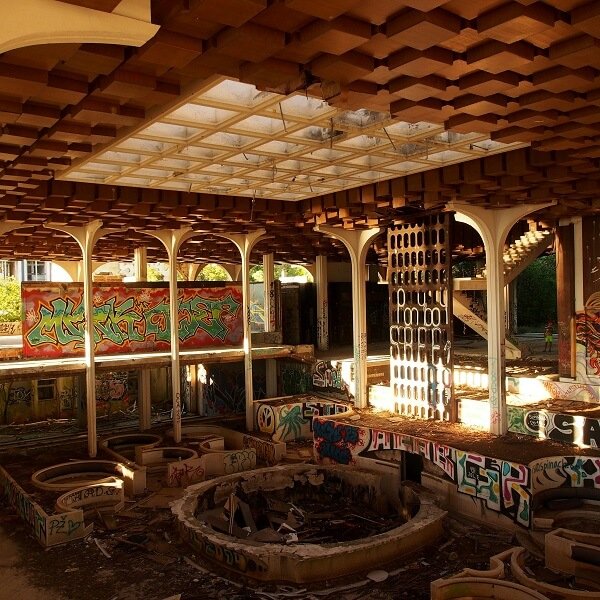
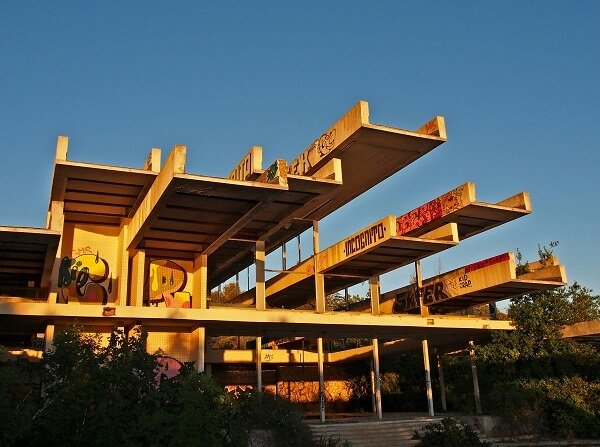
However, Haludovo’s decline was as swift as its rise. Economic challenges and changing political landscapes led to its eventual downfall. The once-luxurious resort became a refuge for refugees during the turbulent ’90s, further hastening its deterioration.
The worthy assets were sold in the auction in which the locals bought the assets for private apartments and soon, the resort became a 5-star ghost hotel.
Today, Haludovo stands as a haunting reminder of what once was. Its corridors, now adorned with graffiti and shattered glass, tell tales of a bygone era. Despite efforts to revive its former glory, it remains a shadow of its former self, a relic frozen in time.
Krvavica Children Maritime Resort
Completed in 1964 and designed by architect Rikard Marasović, Krvavica Children Maritime Resort was a resort for children with Yugoslav parents who suffered from breathing-related illnesses.
The facility was off-limits for anyone without military connections and it served for quite a long time until the Croatian war for independence in 1991.
Since then, the resort has been used as a means of war and as a place for refugees.
Today, the Krvavica Children Maritime Resort is in truly bad shape, but the fascinating architecture which was unusual for the ’60s still beckons explorers, and architect students.
Just under the building lays a beautiful beach that is pretty popular during the hot summer days.
Abandoned private buildings
Besides big abandoned buildings that once stood as a beacon of prosperity and pride, you will find plenty of abandoned private buildings in some Croatian areas.
These are some of the reasons why that’s so.
Economic Challenges and Demographic Factors
While certain economic reforms show success from time to time, the major problem should be fixed on a state level as emigrating citizens should be given an initiative and actual jobs in rural areas far from the big cities.
Today most of the contribution to GDP in Croatia comes from tourism as other industries were seriously hurt in the past, especially after the war, and haven’t recovered since then.
Thus it’s logical why so many people from continental Croatia where tourism isn’t the strongest aspect either go to big cities such as Zagreb to look for a job or emigrate outside the state.
Due to this reason, in continental Croatia, you can find many houses in good condition yet abandoned selling under the market value.
People want modern houses
Istria is full of old houses like these, and most of them are abandoned as modern people prefer modern houses over restoring the old.
These houses might have plenty of stories to tell, but they are very simplistic and were built in times when people would suffer to survive, thus it seems that people want to bury those memories in the past.
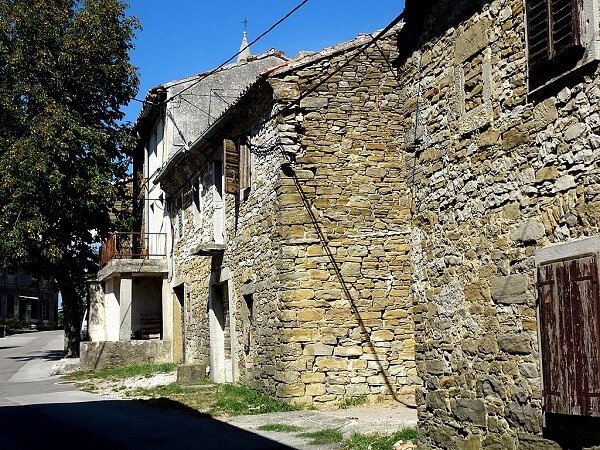
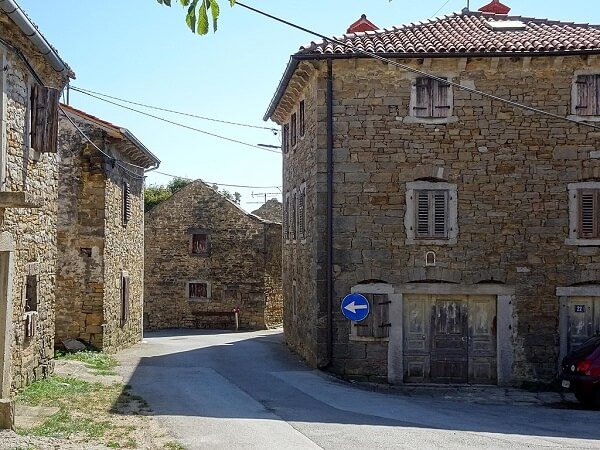
After all, building a new house from scratch isn’t a problem when there’s so much unused terrain in Croatia, and if that’s not the case, a fine apartment in a flat in the cities where you can find a job seems like a better option for many.
Unknown ownership
Many abandoned houses were left to die, and there was nothing anybody could do to prevent it.
After all, the houses might have an owner who emigrated to the U.S. or Canada decades ago, and who can find them again unless they want to be found.
There have been cases when people would continue to use the abandoned property but would run into problems when after 10 years, the owner would return with a lawyer and sue the locals for trespassing and property theft.
Multiple ownership
Families used to be bigger in the past, and just like my grandpa had 7 siblings, it was a norm everywhere that parents could use the help of another pair of hands on the farm.
As time passes, ownerships change and everybody receives their part of the family assets, eventually resulting in multiple people placing the rights on something but being unable to agree on what to do with it as a whole.
Some would like to sell, some would like to rent, and while every building needs maintenance in order not to collapse, nobody seems to take any action and put in the needed money.
Everyone thinks, “Well why would I pay for the roof when the house is not mine and I share it with 5 different people, why don’t they pay?” The other side responds with “We don’t have money right now, but we aren’t willing to sell it either”.
You get an interested buyer but unless everyone is together in it, nothing can be done, that’s how it is in reality.
Conclusion
In the sea of abandoned buildings of Croatia, you can find joy in exploration if that’s your cup of tea. From huge megalomanic abandoned buildings to medieval villages and ruins and monuments dating to World Wars, there’s plenty to explore in Croatia.
On the other hand, you might see the trend of abandoned buildings as a potential business opportunity or buy yourself a stone-made house by the coastline or on islands, renovate it, and enjoy the peaceful life and the beauties Croatia is known for!
